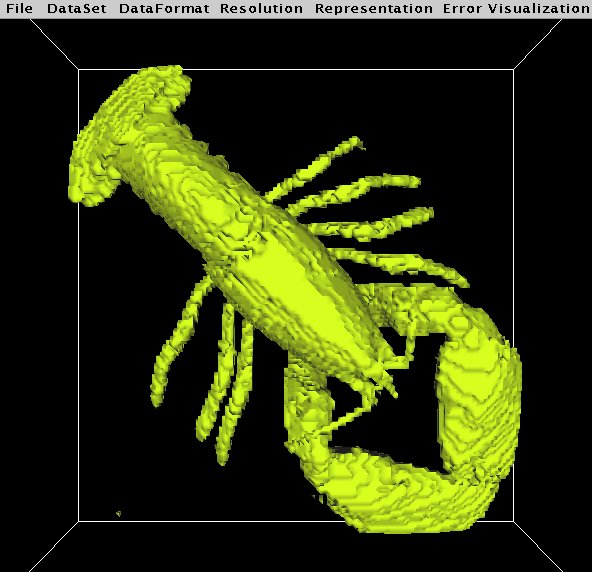| An Isosurface Continuity Algorithm for Super Adaptive Resolution Data |

|
We present the chain-gang algorithm for isosurface rendering of super adaptive resolution (SAR) volume data in order to minimize (1) the space needed for storage of both the data and the isosurface and (2) the time taken for computation. The chain-gang algorithm is able to resolve discontinuities in SAR data sets. Unnecessary computation is avoided by skipping over large sets of volume data deemed uninteresting. Memory space is saved by leaving the uninteresting voxels out of our octree data structure used to traverse the volume data. Our isosurface generation algorithm extends the Marching Cubes Algorithm in order to handle inconsistencies that can arise between abutting cells that are separated by both one and two levels of resolution.
Three isosurfaces from the cadaver head data set, each with resolution 1283 and an isovalue if 0.185: (left) a sample AR isosurface, (middle) a sample SAR isosurface containing 106 2RTs (2 Resolution Transition), and (right) a sample SAR+ isosurface containing 1,163 2RTs. Yellow and red hue indicates SAR portions of the isosurface. (Click on images for an enlargement.)
Three isosurfaces from the cadaver head data set, each with resolution 1283 and an isovalue if 0.408: (left) a sample AR isosurface, (middle) a sample SAR isosurface containing 260 2RTs, and (right) a sample SAR+ isosurface containing 977 2RTs. Non-green hue indicates occurrences of 2RTs.
Three isosurfaces from the lobster data set, each with resolution 1283 and an isovalue if 0.185: (left) a sample AR isosurface, (middle) a sample SAR isosurface containing 47 2RTs, and (right) a sample SAR+ isosurface containing 22 2RTs. Yellow and red hue indicates occurrences of 2RTs.
In case of questions, comments, etc., please send mail to: Laramee "at" VRVis.at.